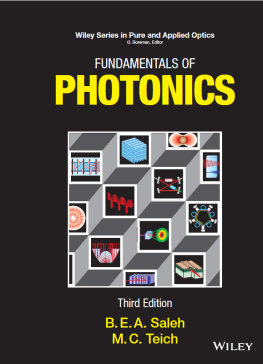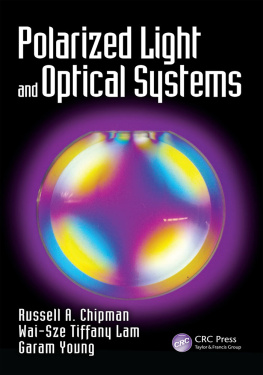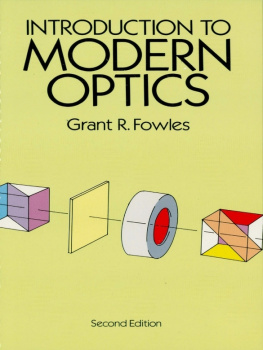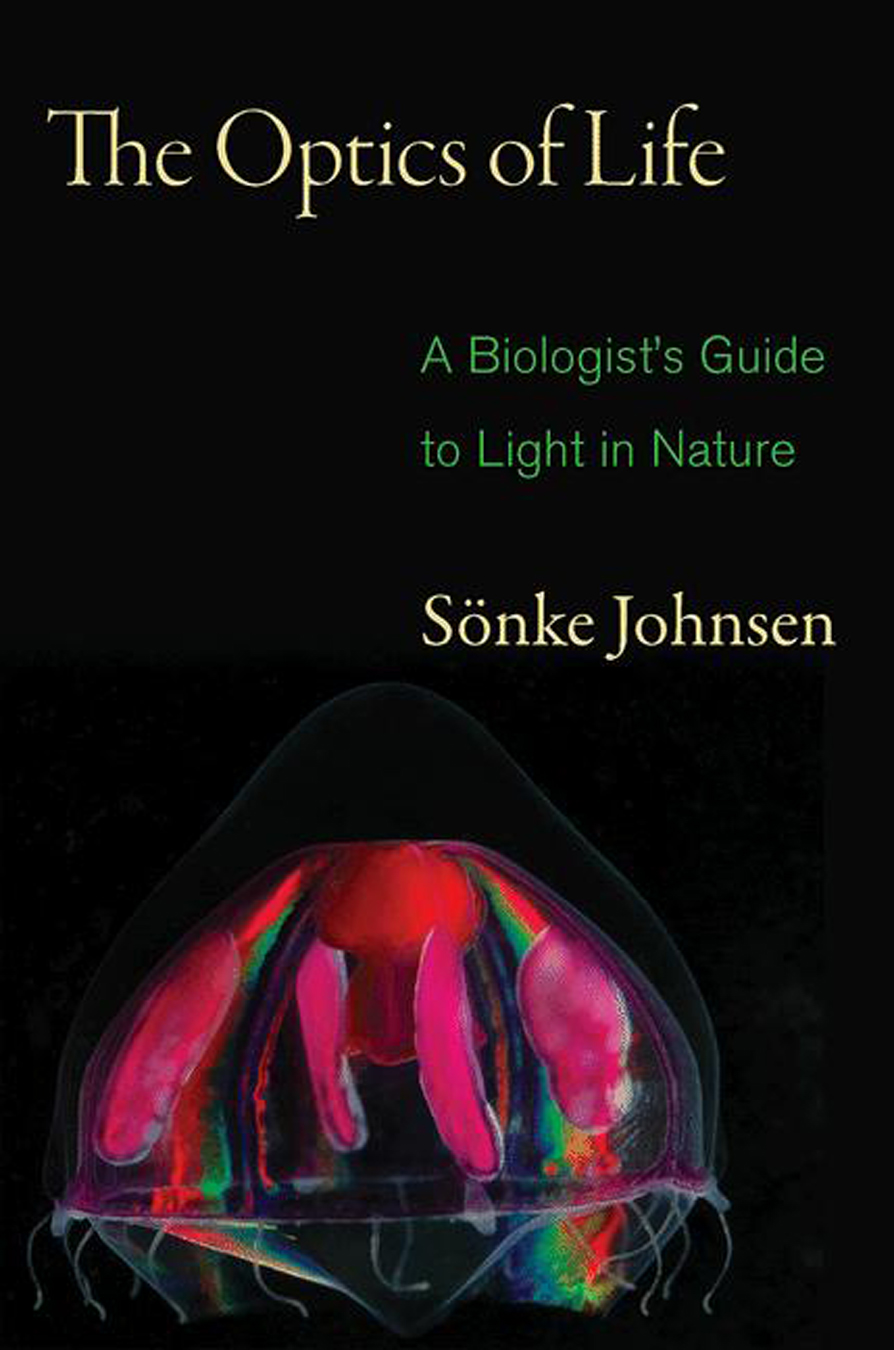THE OPTICS OF LIFE
THE OPTICS OF LIFE
A Biologists Guide to Light in Nature
Snke Johnsen
PRINCETON UNIVERSITY PRESS
PRINCETON AND OXFORD
Copyright 2012 by Princeton University Press
Published by Princeton University Press, 41 William Street,
Princeton, New Jersey 08540
In the United Kingdom: Princeton University Press, 6 Oxford Street,
Woodstock, Oxfordshire OX20 1TW
press.princeton.edu
Jacket Photo: An undescribed species of Hydromedusa in the genus Tetrorchis shows various optical effects, including transparency, absorption by pigments, and iridescence caused by coherent scattering. Courtesy of Steven Haddock.
All Rights Reserved
Library of Congress Cataloging-in-Publication Data
Johnsen, Snke.
The optics of life : a biologists guide to light in nature / Sonke Johnsen.
p. cm.
Includes index.
ISBN 978-0-691-13990-6 (hardback) ISBN 978-0-691-13991-3 (paperback) 1. Photobiology. 2. Physiological optics. 3. Polarization (Light) I. Title.
QH515.J64 2011
571.4'55dc23 2011021796
British Library Cataloging-in-Publication Data is available
This book has been composed in Garamond Premier Pro
Printed on acid-free paper.
Printed in the United States of America
10 9 8 7 6 5 4 3 2 1
For my parents, my first and best teachers
CONTENTS
ACKNOWLEDGMENTS
Im not sure why I wrote this book. I do enjoy writing, but this was a lot of work, so there must have been a reason. When I pitched the project to my editor, I told her that it would fill a niche, but Ive never been one to lose sleep over unfilled holes. I also told her that optics was important to biology. It is, but so what? My colleague Steve Vogel told me once that writing books is wonderful because it transforms you from a competitor into an enabler. I do hope this book helps people use optics in their research, but honestly I still feel competitive. Maybe I just want people to stop me in the hall and say, Nice book! Id be lying if I said this didnt matter. Im shallow, and flattery goes a long way with me.
Theres more though. While not conventionally religious, I am often overcome by this worldits like being given a prize over and over. The most remarkable part to me is that we are able to appreciate and at least partially understand it. Being a biologist, I can mumble about scientific curiosity being an epiphenomenon of natural selection for cooperative hunting, foraging, individual recognition, and so on, but that doesnt make it any less incredible. As the physicist Isidor Rabi said when the muon was discovered, Who ordered that? However we acquired this ability to appreciate and understand the world, it would be rude to waste it. So I wrote this book to share this feeling, this amazement at what is all around us.
I got a lot of help. Laurie McNeil, Craig Bohren, and my father, Rainer Johnsen, patiently went over some of the finer physical points with me. Craig, in particular, went far beyond the call of duty, sending wonderfully detailed answers to so many of my questions. Frankly, his books are better than mine; read them if you can understand the math. Laurie McNeil, Eric Warrant, John Endler, Tamara Frank, Marianne Moore, and members of my lab all read parts of this book, helping with language, ideas, and making sure that biologists would understand and appreciate it. Alison Sweeney, Andrij Horodysky, Andrew Smith, my father, and two anonymous reviewers read and edited the whole thing. Many colleagues allowed me to use their figures and photos. A week at Friday Harbors Helen Whiteley Center finally broke six months of writers block. Finally, Alison Kalett, Marsha Kunin, Stefani Wexler, and Karen Carter at Princeton Press turned my draft into a real book.
Id also like to thank my shipmates over the years, Tammy, Edie, Erika, Steve, Alison, Brad, Justin, Jamie, Dan, and so many otherscrazy pirates, all of themfor sharing the excitement and fun of life at sea. Finally, I thank my wife, Lynn, for being there and reminding meevery time I come home excited about some new resultto tell her why she should care, and my daughter, Zoe, for reminding me that Dads just a dad.
THE OPTICS OF LIFE
CHAPTER ONE
Introduction
In the right light, at the right time, everything is extraordinary.
AARON ROSE (quoted in Live in the Light: A Journal of Self-Enlightenment, Mary Engelbreit)
Of all the remarkable substances of our experiencerain, leaves, baby toeslight is perhaps the most miraculous. Essentially indefinable, it is the ultimate food for our planets life and allows us to perceive the world in nearly magical detail and diversity. Via warmth, vision, and photosynthesis, and its darker aspects such as radiation damage, light interacts fundamentally with nearly all forms of life. Only certain subterranean species may be free from its influence.
Despite this, light remains relatively unstudied by biologists. In my own field of oceanography, we have instruments known as CTDs that measure salinity and temperature as a function of depth. These devices are ubiquitous, and the characterization of a body of water is considered incomplete without the data they provide. However, even though light is known to fundamentally affect the distribution, ecology, and behavior of marine organisms, it is seldom measured, despite the availability of economical light-meter attachments made specifically for this instrument. Oceanography is a field known for the tight connections it provides between biology and physics; in other biological fields light measurement is rare. Even worse, many light measurements are taken incorrectly. It is no fun to tell a colleague that, because they didnt put a two-inch cardboard tube around their detector, the data they collected over the last three years is unsalvageable.
In my opinion, the relative lack of optics in biology is primarily the result of a few factors. First, biologists receive very little training in the subject. What they do get is usually confined to the electromagnetism portion of an introductory physics course that derives Maxwells equations and Coulombs Law but gives little practical advice about working with light. While there are some good laboratory courses in optics, theyre generally populated by physics majors. Second, no other field uses such an arcane and confusing collection of units. Sorting absorbance from absorption, and irradiance from radiance is hard enough without having to do it using nits, candles, and foot-lamberts. Third, the equipment needed is generally geared toward physicists, advertised in their journals, and using their units and terminology. This equipment, while smaller and cheaper than it used to be, is still relatively expensive and fussy compared to, for example, a lab balance.
Finally, and perhaps most importantly, there are few good books. Yes, there are excellent books on optical theory and instrumentation, but they assume a graduate degree in physics or engineering. The three exceptions, Clouds in a Glass of Beer and What Light Through Yonder Window Breaks? by Craig Bohren, and QED by Richard Feynman are wonderful books, but give little practical advice. There are a few excellent books on the optics of vision, my favorite being Animal Eyes by Michael Land and Dan-Eric Nilsson, but they do not cover other biologically important aspects of light such as scattering, emission, and absorption.
Therefore, the few biologists working with optics either came in with a physics background (and, like myself, had a lot to learn about biology) or were trained by the even smaller number of biologists familiar with the subject. This has led to a bottleneck where there are many more interesting bio-optical problems than there are people able to work on them. One of my favorite activities as a child was to take apart small natural dams in creeks. It is my hope that this book, by providing the basics necessary to measure and use light in biological research, will breach this bottleneck and lead to a flood of new results and insights.







